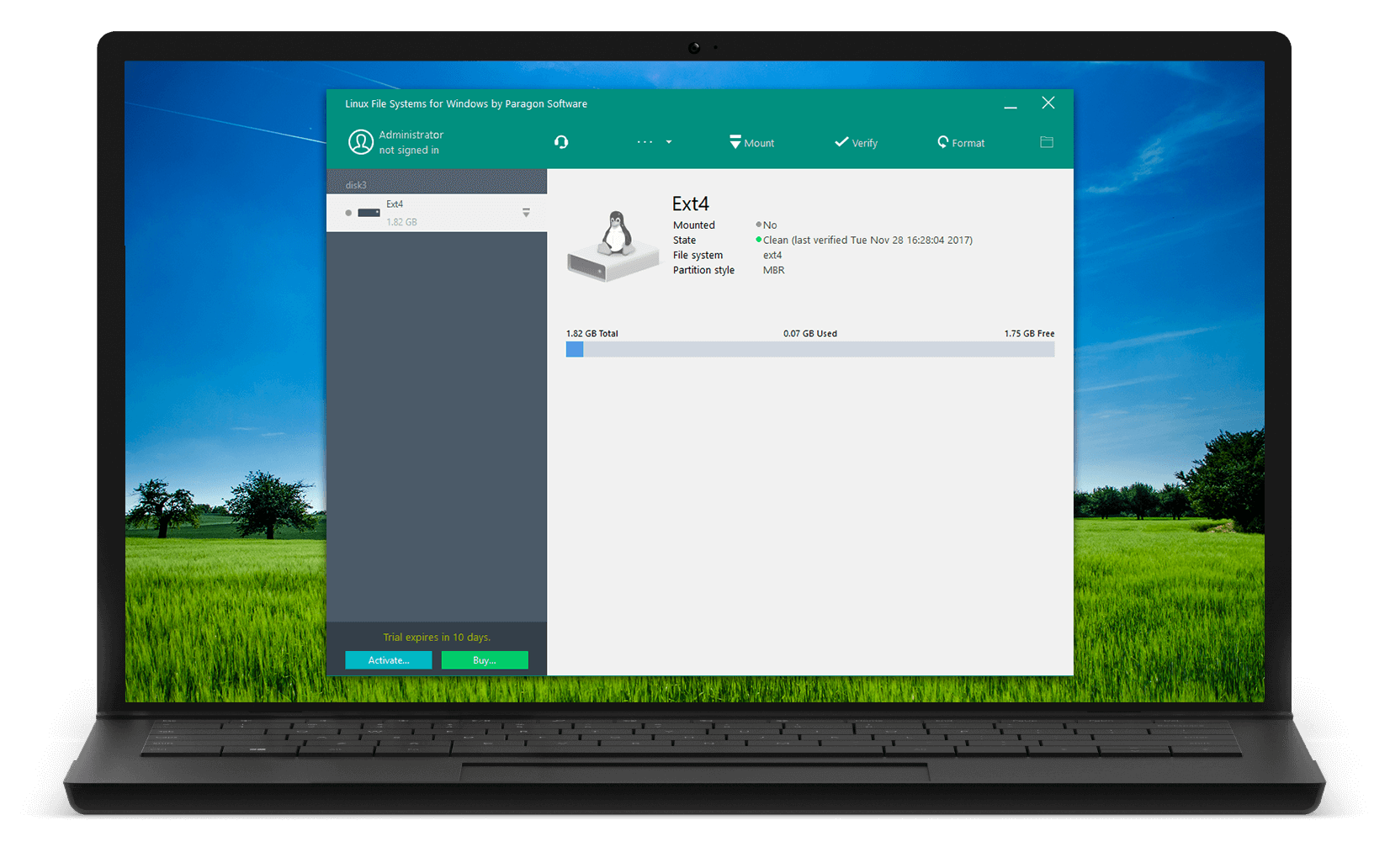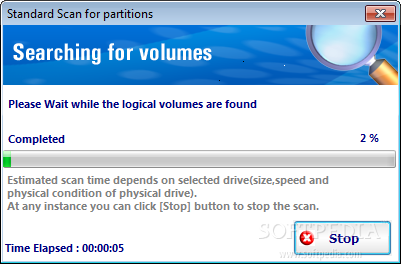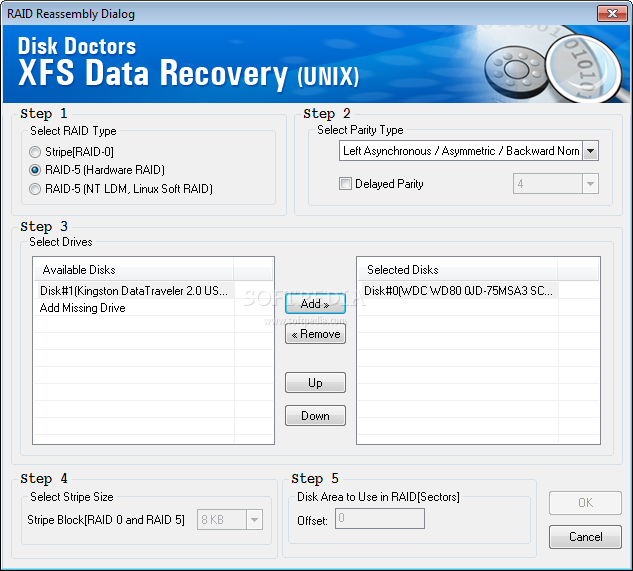Please note that most AMD drivers are universal and backwards compatible however they are Operating System specific. Always make sure you choose the appropriate Operating System for your computer, however the latest drivers should be compatible with most GPU for many generations back. For BIOS Updates, please check your product's main page. To get the latest driver, including Windows 10 drivers, you can choose from a list of most popular XFX downloads. Click the download button next to the matching model name. After you complete your download, move on to Step 2.
Linux File Systems for Windows by Paragon Software is a unique tool which enables full access to Linux volumes under Windows OS.
Just plug your hard disk with ExtFS/Btrfs/XFS partitions into your PC and instantly access your media in a Windows environment.
How it works
Just as simple as that
- It installs a pure kernel mode file system driver Ext2fs.sys, which actually extends the Windows operating system to include the Ext2 file system.Since it is executed on the same software layer at the Windows operating system core like all of the native file system drivers of Windows (for instance NTFS, FASTFAT, or CDFS for Joliet/ISO CD-ROMs), all applications can access directly to Ext2 volumes.
- Linux File Systems for Windows by Paragon Software is a unique tool which enables full access to Linux volumes under Windows OS. Just plug your hard disk with ExtFS/Btrfs/XFS partitions into your PC and instantly access your media in a Windows environment.
Download and install Linux File Systems for Windows by Paragon Software
Your drive will show up in File Explorer


Use cases


Read and write Linux-formatted data
There is no easy way to read or write data from Linux-formatted storage devices under Windows. If you have Linux-based devices at home (NAS, smart TVs, multimedia boxes, routers) and would like to access data from Linux-formatted media on a Windows PC, your choice is Linux File Systems for Windows by Paragon Software.
- Supported file systems: Read/write: Ext2, Ext3, Ext4, read-only: Btrfs, XFS
- Fast read and write access to Linux-formatted HDD, SSD, or flash drives
- Set-and-run operation mode
- Managed through the Windows system tray or from Windows CMD
- Support for Linux LVM disks
- Includes ‘Runs at startup’ and ‘Automount’ features
- Safe eject available.
| Current Version |
|
|---|---|
| Need help? |
|
CEN/XFS or XFS (extensions for financial services) provides a client-server architecture for financial applications on the Microsoft Windows platform, especially peripheral devices such as EFTPOS terminals and ATMs which are unique to the financial industry. It is an international standard promoted by the European Committee for Standardization (known by the acronym CEN, hence CEN/XFS). The standard is based on the WOSA Extensions for Financial Services or WOSA/XFS developed by Microsoft.
With the move to a more standardized software base, financial institutions have been increasingly interested in the ability to pick and choose the application programs that drive their equipment. XFS provides a common API for accessing and manipulating various financial services devices regardless of the manufacturer.
History[edit]
Chronology:
- 1991 - Microsoft forms 'Banking Solutions Vendor Council'
- 1995 - WOSA/XFS 1.11 released
- 1997 - WOSA/XFS 2.0 released - additional support for 24 hours-a-day unattended operation
- 1998 - adopted by European Committee for Standardization as an international standard.
- 2000 - XFS 3.0 released by CEN
- 2008 - XFS 3.10 released by CEN
- 2011 - XFS 3.20 released by CEN
- 2015 - XFS 3.30 released by CEN
- 2020 - XFS 3.40 released by CEN
WOSA/XFS changed name to simply XFS when the standard was adopted by the international CEN/ISSS standards body. However, it is most commonly called CEN/XFS by the industry participants.
XFS middleware[edit]
While the perceived benefit of XFS is similar to Java's 'write once, run anywhere' mantra, often different hardware vendors have different interpretations of the XFS standard. The result of these differences in interpretation means that applications typically use a middleware to even out the differences between various platforms implementation of XFS.
Windows Xfs Reader
Notable XFS middleware platforms include:
Windows 10 Xfs Driver
- F1 Solutions - F1 TPS (multi-vendor ATM & POS solution)
- Nexus Software LLC - Nexus Evolution
- Nautilus Hyosung - Nextware
- NCR - NCR XFS
- KAL - KAL Kalignite
- Auriga - The Banking E-volution- WWS Omnichannel Platform
- Cashware - XFS service providers
- Phoenix InteractiveVISTAatm Acquired by Diedold
- Wincor Nixdorf ProBase (ProBase C as WOSA/XFS platform - ProBase J as J/XFS platform)
- Dynasty Technology Group - (JSI) Jam Service Interface
- HST Systems & Technologies - HAL Interface
- FreeXFS- open source XFS platform
- GRG bankingeCAT (multi-vendor ATM terminal solution)
- TIS xfs.js implementation(open source for node.js community)
- TEB Orion
XFS test tools[edit]
XFS test tools allow testing of XFS applications and middleware on simulated hardware. Some tools include sophisticated automatic regression testing capabilities.
Providers of XFS test tools include:
- Abbrevia Simplicity [1]
- Paragon VirtualATM Product PageVirtualATM Intro Video
- Cashware (Aurigae Group) XFS and J/XFS ATM Simulator, ATMirage
- FIS ATM Testlab, [2] (was Clear2Pay, formally Level Four Software and Lexcel TestSystem ATM)
- KALKAL Kalignite Test Utilities
- Dynasty Technology Group - JSI Simulators
- HST Systems & Technologies (Brazil)
- Takkto Technologies (Mexico)
- LUTZWOLF JDST - Testtool for J/XFS compatibility
- Afferent Software RapidFire ATM XFS [3]
- Serquo Software XFS and J/XFS ATM Simulator [4]
J/XFS[edit]
J/XFS is an alternative API to CEN/XFS (which is Windows specific) and also to Xpeak (which is Operating System independent, based on XML messages). J/XFS is written in Java with the objective to provide a platform agnostic client-server architecture for financial applications, especially peripheral devices used in the financial industry such as EFTPOS terminals and ATMs.
With the move to a more standardized software base, financial institutions have been increasingly interested in the ability to pick and choose the application programs that drive their equipment. J/XFS provides a common Object Oriented API between a pure Java application and a wide range of financial devices, providing a layer of separation between application and device logic that can be implemented using a native J/XFS API or wrapping an existing implementation in JavaPOS or CEN/XFS.
J/XFS was developed by the companies De La Rue, IBM, NCR, Wincor Nixdorf and Sun Microsystems and is now hosted, monitored and maintained by the European Committee for Standardisation, CEN.

See also[edit]
- Xpeak - Devices Connectivity using XML (Open Source Project).
External links[edit]
